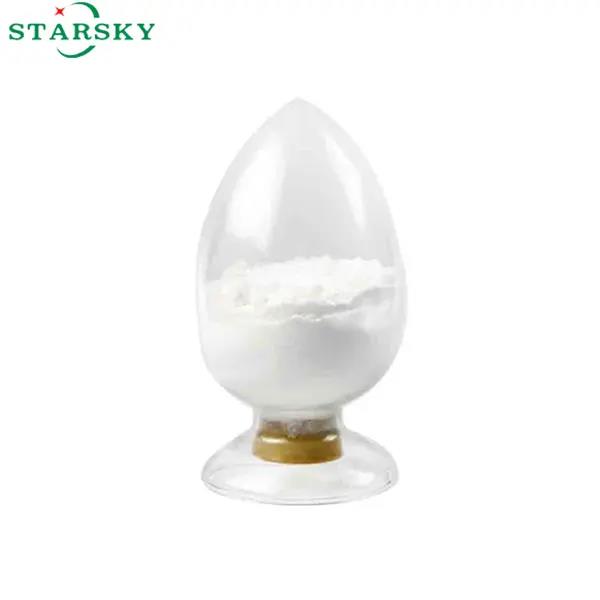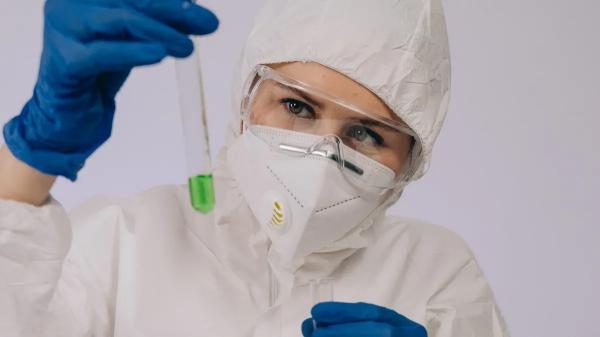Data Backed Ways To Boost 2 5-Furandicarboxylic Acid Sustainability
| Catalyst | HMF Conversion (%) | FDCA Yield (%) | Reaction Time | Temperature | O2 Pressure | FDCA Formation Rate (μmol min−1 g−1) |
| Co1.3-N-C | 100 | 99.6 | 1 hour | 90 °C | 0.1 MPa | 52.34 |
| CoOx nanoparticles | N/A | 95 | 30 hours | 80 °C | 0.5 MPa | N/A |
| Co-Cu-CNx | N/A | 96 | 12 hours | N/A | N/A | N/A |
| FeNPs@NH2-SBA-15 | 100 | 89.4 | N/A | N/A | 0.6 MPa | N/A |
Tip: When you select biomass-derived HMF as your feedstock, you directly support a circular bioeconomy and lower the environmental impact of 2 5-Furandicarboxylic acid manufacturing.
Catalytic and Green Chemistry Approaches
You can further improve sustainability by adopting advanced catalytic and green chemistry strategies. Recent progress includes chemocatalysis, biocatalysis, photocatalysis, and electrocatalysis. Biocatalysis stands out for its mild reaction conditions, lower cost, and high selectivity. You can use enzymes or engineered microbes to convert HMF and related compounds into FDCA, which reduces the need for harsh chemicals.
Green chemistry approaches focus on using heterogeneous catalysts, such as alloyed AuPd(2:1)/C, which show high activity and resist deactivation from impurities in unrefined biomass. This allows you to process crude HMF directly, skipping purification steps and reducing waste. Optimizing the amount of base in the reaction can further increase FDCA yield.
You can also use green solvents like γ-valerolactone (GVL) mixed with water. This solvent system improves FDCA solubility, enables easier product separation, and eliminates the need for corrosive acids or bases. Heterogeneous catalysts like Pt/C provide high yields and can be reused, which lowers costs and waste.
| Catalyst Type | FDCA Yield/Selectivity | Stability/Recyclability | Reaction Conditions/Notes |
| Ru/Al2O3 (microwave) | Up to 98% selectivity | Excellent recyclability and sustained activity | 140 °C, 30 bar O2, alkaline aqueous solution (Na2CO3) |
| Ru/Mn-Ce oxides | ≥99% yield | Remarkable stability over multiple cycles | Oxygen and water as green oxidants, strong metal-support interaction |
| Co–Cr metal oxides | 61.74% yield | Retains 99.95% activity over 5 cycles | One-pot conversion from biomass, sustainable and cost-effective |
| Co-OMS-2 + CaCO3 | 90% yield | Enhanced oxidation capacity and stability | Neutral conditions, 120 °C, 1 MPa O2, CaCO3 additive |
| Au/activated carbon | Up to 80% yield | Some stability limitations for Pt and Pd | 3 bar O2, 60 °C, NaOH solvent |
Process Optimization and Feedstock Selection
You can maximize efficiency and sustainability by optimizing your process and carefully selecting feedstocks. Enzyme selection plays a key role. For example, hydroxymethylfurfural oxidase (HMFO) offers better stability and performance than other enzymes, especially when you use variants like V367R and 8BxHMFO. Adding catalase to remove hydrogen peroxide can increase FDCA yield up to ninefold.
Operational parameters matter. Setting the pH at 8.0 and managing oxygen concentration ensures optimal FDCA production. Reactor design improvements, such as continuous-flow microreactors, boost oxygen transfer and scalability.
| Optimization Strategy | Description & Impact |
| Enzyme Selection | HMFO preferred for stability and efficient oxidation of FFCA, the limiting step in FDCA production. |
| Enzyme Variants | V367R and 8BxHMFO achieve full conversion of 6 mM HMF to FDCA in 48 hours. |
| Catalase Addition | Removes inhibitory H2O2, increasing enzyme half-life and FDCA yield (up to 9-fold improvement). |
| Operational Parameters | Optimal pH 8.0, atmospheric O2 sufficient for variants, higher O2 may enhance scalability. |
| Reactor Design Improvements | Continuous-flow microreactors improve oxygen transfer rates and scalability. |
| Cost Considerations | FAD cofactor addition is cost-prohibitive and excluded from optimized conditions. |
Feedstock selection also shapes sustainability. When you use biomass-derived HMF from glucose or fructose, you replace fossil resources and support renewable chemical production. Nickel-based catalysts can convert crude HMF from glucose dehydration, offering recyclability and reducing reliance on noble metals.
You can further reduce energy consumption by optimizing media components, such as substrate concentration, pH, and temperature. Using cheap feedstocks like thermal algal hydrolyzate and optimizing recovery parameters can lower both costs and energy use.
By focusing on process optimization and renewable feedstocks, you ensure that 2 5-Furandicarboxylic acid production remains efficient, scalable, and environmentally responsible.
Environmental Impact and Life Cycle Assessment of 2 5-Furandicarboxylic acid Production Carbon Footprint and Resource Efficiency
You can significantly lower your environmental impact by choosing 2 5-Furandicarboxylic acid made from renewable biomass. When you use plant-based sugars instead of petroleum, you help reduce greenhouse gas emissions. Studies show that producing PEF from 2 5-Furandicarboxylic acid can cut the carbon footprint by up to 50% compared to PET. The process uses less energy and locks CO2 in the polymer, which further reduces emissions. If you use waste lignocellulosic biomass and CO2 as raw materials, you also lower production costs and avoid fossil fuels. Life cycle assessments (LCAs) highlight that the environmental benefits depend on process efficiency, production scale, and how you allocate impacts from biomass cultivation.
Waste Generation and Process Intensification
You can improve sustainability by focusing on waste reduction and process intensification. Laboratory-scale production of 2 5-Furandicarboxylic acid often creates more waste due to high use of consumables. Industrial-scale processes, however, show better resource efficiency. When you use advanced catalysts and continuous-flow reactors, you minimize by-products and energy use. LCAs also examine marine and freshwater eutrophication, which can result from biomass-derived chemical production. By optimizing your process and using renewable feedstocks, you help reduce waste and lower the risk of environmental harm.
Challenges and Data-Driven Opportunities
You face several challenges in sustainable 2 5-Furandicarboxylic acid production:
| Challenge | Explanation |
| High production costs | Bio-based production needs expensive feedstocks and energy, raising costs. |
| Fluctuating raw material prices | Prices for renewable feedstocks change often, making planning difficult. |
| Stringent environmental regulations | Strict rules increase compliance costs and limit growth. |
| Lack of economies of scale | Limited large-scale infrastructure keeps costs high. |
FAQ
What makes biobased FDCA more sustainable than petroleum-based alternatives?
You use renewable feedstocks, which lowers greenhouse gas emissions. Biobased FDCA also supports a circular economy and reduces reliance on fossil resources.
How can you improve FDCA yield during synthesis?
You optimize catalyst choice, reaction conditions, and feedstock purity.
Tip: Use continuous-flow reactors for better oxygen transfer and higher yields.
Which data should you track for sustainable FDCA production?
You monitor energy use, carbon footprint, waste generation, and product yield.
Life cycle assessment (LCA) data helps you identify improvement opportunities.

Legal Disclaimer:
MENAFN provides the
information “as is” without warranty of any kind. We do not accept
any responsibility or liability for the accuracy, content, images,
videos, licenses, completeness, legality, or reliability of the information
contained in this article. If you have any complaints or copyright
issues related to this article, kindly contact the provider above.
Most popular stories
Market Research

- United States Lubricants Market Growth Opportunities & Share Dynamics 20252033
- Daytrading Publishes New Study On The Dangers Of AI Tools Used By Traders
- Newcastle United Announce Multi-Year Partnership With Bydfi
- Ecosync & Carboncore Launch Full Stages Refi Infrastructure Linking Carbon Credits With Web3
- Utila Triples Valuation In Six Months As Stablecoin Infrastructure Demand Triggers $22M Extension Round
- From Zero To Crypto Hero In 25 Minutes: Changelly Introduces A Free Gamified Crash Course



















Comments
No comment